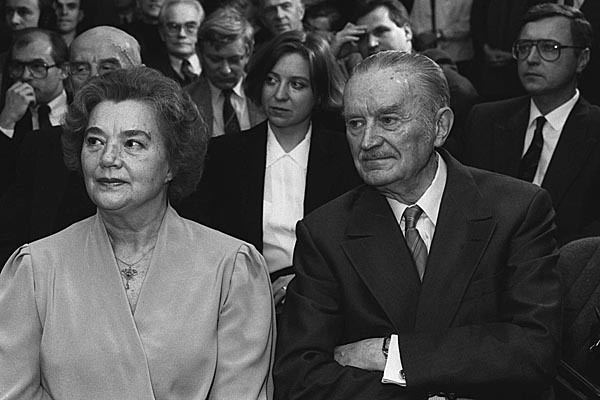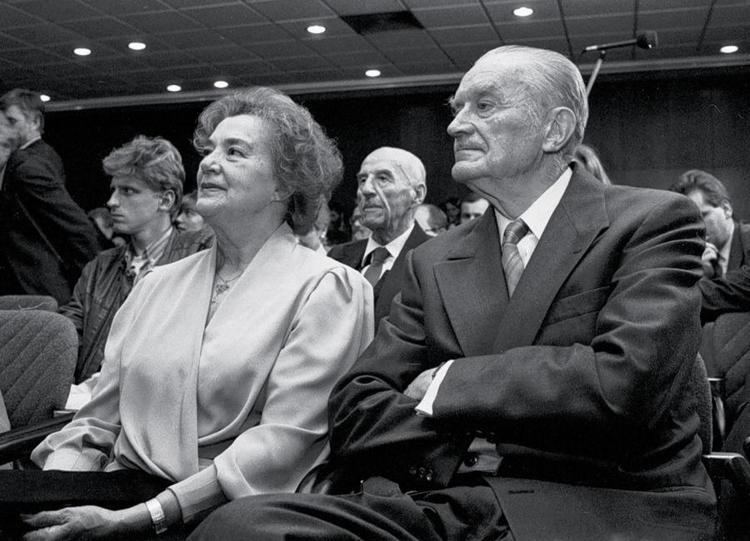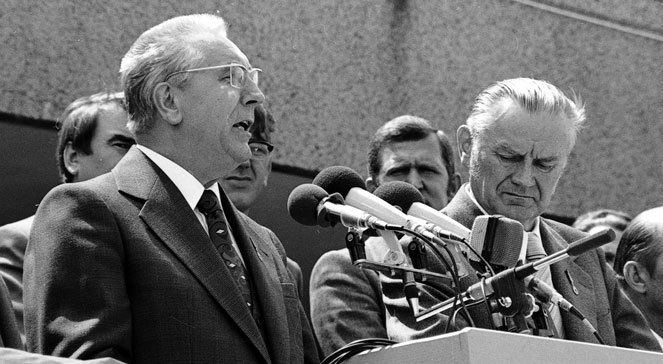Preceded by Jozef Cyrankiewicz Role Polish Political figure Spouse(s) Alicja Solska | Profession Teacher, Military Name Piotr Jaroszewicz | |
 | ||
Vice PM Mieczyslaw Jagielski, Franciszek Kaim, Jan Mitrega, Kazimierz Olszewski, Jozef Tejchma, Zdzislaw Tomal, Franciszek Szlachcic, Alojzy Karkoszka, Tadeusz Pyka, Longin Cegielski, Tadeusz Wrzaszczyk, Jozef Kepa, Kazimierz Secomski, Jan Szydlak Children Andrzej Jaroszewicz, Jan Jaroszewicz Similar People Andrzej Jaroszewicz, Edward Gierek, Jozef Cyrankiewicz, Stefan Starzynski, Zdzislaw Beksinski | ||
Synd 6 5 76 prime minister of poland piotr jaroszewicz arrives in paris
Gen. Piotr Jaroszewicz (['pjɔtr jarɔˈʂɛvit͡ʂ]; 8 October 1909 – 1 September 1992) was a post World War II Polish political figure. He served as the Prime Minister of Poland between 1970 and 1980. After he was forced out of office he lived quietly in a suburb of Warsaw until his brutal, still unsolved 1992 murder.
Contents
- Synd 6 5 76 prime minister of poland piotr jaroszewicz arrives in paris
- KONIEC SYSTEMU ODC 721 JAK ZGIN BYY PREMIER PIOTR JAROSZEWICZ
- Life and career
- Death
- References

KONIEC SYSTEMU - ODC. 72/1 - JAK ZGINĄŁ BYŁY PREMIER PIOTR JAROSZEWICZ?
Life and career

Jaroszewicz was born on 8 October 1909 in Nieśwież, in the Minsk Governorate of the Russian Empire (present-day Belarus). After finishing the secondary school in Jasło he started working as a teacher and headmaster in Garwolin. After the outbreak of World War II and the Nazi-Soviet alliance established by the Molotov–Ribbentrop Pact he moved to Soviet-occupied zone of Poland. It has been claimed that he was a headmaster in Pinsk gymnasia. However, on 10 July 1940 he was deported to Slobodka, Krasnoborski raion, Arkhangelsk, from Stolin together with his first wife Oksana Gregorevna (born in Salov/Calow 1914) and daughter Olila (born 1940). In 1943 he joined the 1st Polish Army of Gen. Zygmunt Berling. The following year he joined the Polish Workers Party and was promoted to deputy political commander of the 1st Army.

After the war he became the deputy minister of defense (1945–1950). Since 1956 he was the Polish ambassador to COMECON. At the same time between 1952 and 1970 he served as a deputy Prime Minister of Poland and briefly (1954–1956) as the minister of mining industry. Jaroszewicz was a member of the Central Committee of the Polish United Workers' Party since its creation in 1948 and since 1964 he was also a member of the Political Bureau. From December 1970 until February 1980 he was the Prime Minister of Poland. The economical policies of Jaroszewicz and Edward Gierek led to a wave of protests in 1976 and 1980. In 1980 he gave up all his party posts and was expelled from the party the following year.
Death

After his departure from office and the party, Jaroszewicz and second wife Alicia Solska settled in the Warsaw suburb of Anin. The couple largely kept to themselves and did not socialize much. Jaroszewicz was obsessed with security; he had a 3.3-meter (11 foot) fence topped with barbed wire installed around their villa. When he walked their Rottweiler, neighbors said, he often carried a pistol with him.

Despite these measures, their son Jan Jaroszewicz found the couple murdered when he entered the house on 3 September 1992. Poison gas had been used to incapacitate the dog. Jaroszewicz's body, found in his upstairs study, had the belt that had been used to strangle him intact secured by an antique ice axe from his collection. The attackers had also beaten him, yet bandaged those wounds as well.
Solska's body was right next to her husband's. Her hands had been tied behind her back, and she had been shot in the head at close range with one of the couple's hunting rifles. Investigators believe that she had earlier managed to injure one of the killers during a struggle with him or her, since blood from her and an unknown individual were found in another room in the house.
The killers appeared to have searched every room in the house. However, they only took what were presumed to have been documents from one safe. Valuable old coins and art were left behind, suggesting the thieves, despite what seemed to have been extensive preparation, were not motivated by financial gain.
Friends and family said that Jaroszewicz had been acting even more paranoid than usual in the days before the murders, which were determined to have occurred on 1 September, two days before the bodies were discovered. The killings received wide media attention in Poland, due both to Jaroszewicz's past leadership and the brutality of the crime, which had not been seen since World War II. In the absence of solid leads, theories circulated that the killers had been looking for information with which to blackmail Solidarity leaders, or victims of the Communist regime looking for revenge and/or evidence of past crimes. No suspects have ever been identified.
